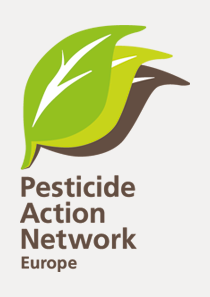Factsheets
The following factsheets are available in pdf format:

Chlorpyrifos: EU should ban brain-harming chlorpyrifos to protect health (August 2018)

Sulfoxaflor and flupyradifurone: neonics or not? How pesticide industry tricks regulators (14 September 2016)
This factsheet highlights how Dow and Bayer, the producers of sulfoxaflor and flupyradifurone have been twisting science and inventing their own rules to have sulfoxaflor and flupyradifurone not included in the neonicotinoids family. A way to through sand at the eyes of regulators.

Food Security and Agriculture
Food security depends very much on the number of people needing food, the level of consumption of people (especially animal diets), and the availability of (fertile) lands.

Supermarkets
Eleven European supermarkets are now taking steps to reduce the level of pesticides in their food supply chains. Our Factsheet summarises these efforts.
See also Supermarket Summary Table of Commitments

Pesticides in Food
Latest information on the widespread presence of pesticides in food items sold in the European Union.

Endosulfan
Endosulfan is one of the world’s worst pesticides and has devastating impacts on human health and the global environment.

Climate Change and Agriculture
Agriculture is a big contributor to climate change. According to the International Panel on Climate Change (IPCC, Fourth Assessment Report, 2007) this accounts to 10-12% on all anthropogenic greenhouse gas emissions.

Carbendazim
Independent literature shows that the pesticide Carbendazim is a very dangerous "toxin", capable of causing malformations in the foetus at very low doses and it's still uncertain if a safe level exists at all.

Bees & Pesticides
Essential to the production of key EU food crops, yet in sudden decline. What links pesticides and mass bee deaths occurring globally?